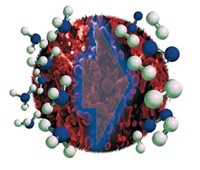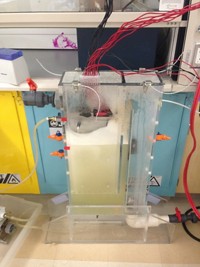Advertisement
Grab your lab coat. Let's get started
Welcome!
Welcome!
Create an account below to get 6 C&EN articles per month, receive newsletters and more - all free.
It seems this is your first time logging in online. Please enter the following information to continue.
As an ACS member you automatically get access to this site. All we need is few more details to create your reading experience.
Not you? Sign in with a different account.
Not you? Sign in with a different account.
ERROR 1
ERROR 1
ERROR 2
ERROR 2
ERROR 2
ERROR 2
ERROR 2
Password and Confirm password must match.
If you have an ACS member number, please enter it here so we can link this account to your membership. (optional)
ERROR 2
ACS values your privacy. By submitting your information, you are gaining access to C&EN and subscribing to our weekly newsletter. We use the information you provide to make your reading experience better, and we will never sell your data to third party members.
Environment
Making Fuel While Cleaning Up Arsenic
Electrochemical cell that oxidizes arsenic and produces hydrogen could cut costs for remediating contaminated water
by Journal News and Community
January 20, 2014
| A version of this story appeared in
Volume 92, Issue 3
Arsenic contamination of drinking water is a serious problem in many parts of Asia. The element is also abundant in industrial wastewaters or acidic drainage from mines. Now, researchers have designed a way to increase the cost-effectiveness of removing the toxic element from water by coupling the cleanup with hydrogen fuel generation. To remediate arsenic-laced waters, engineers usually oxidize the more toxic form of the metalloid, As(III), to its easy-to-remove and less toxic form, As(V). Michael R. Hoffmann, an environmental engineer at Caltech, adapted a hydrogen-producing electrochemical cell to oxidize As(III) while reducing water to hydrogen. The cell has a semiconductor anode made of bismuth-doped titanium dioxide and a cathode made of stainless steel. In the presence of 1-mM As(III), the cell’s energy efficiency in producing hydrogen increased by 18% (Environ. Sci. Technol. 2014, DOI: 10.1021/es4046814). The prototype cell can produce up to 9.4 µmol of hydrogen per minute and works best at millimolar As(III) concentrations, which are typical of industrial wastewaters. Hoffmann plans to test the device later this year on drinking water in India.





Join the conversation
Contact the reporter
Submit a Letter to the Editor for publication
Engage with us on Twitter